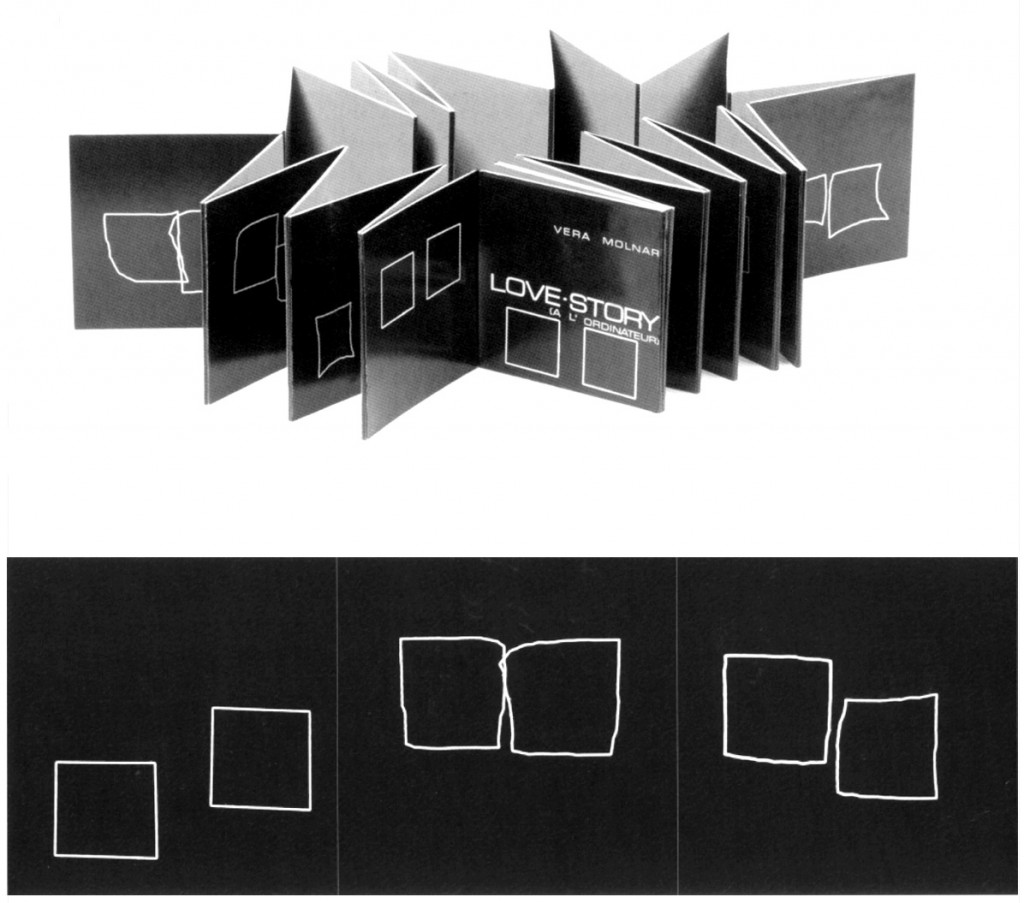
With so many books to discuss (679!), and with such a wide variety of methods, genres, and motivations for participations, it can be difficult to find the right entry points for exploring the corpus. I have found it helpful to think of books falling into one of three conceptual categories and one of three aesthetic categories, although these typologies are by no means mutually exclusive, exhaustive, or even all that clear.
I've been calling this broad type "metonymic," but "sculptural" works as well. Possibly better. Those works, generally, are concerned with "aesthetic bookishness" either via resemblance or reference to the medium of the book or through employing concrete aesthetic strategies.
Some important pre-NNGM antecedents to books in this category include concrete poetry and artists books like several by Vera Molnar and Manfred Mohr.

Vera Molnar's Love Story 1974.

Vera Molnar's Lettres de ma mère (1981)
Authors contributing to NaNoGenMo have explored asemic writing, abstract imagery, and other bookish conceits.
These are books of contingency or that bear a "metaphorical" relationship to a specific book or genre of books. Works employing this generic strategy are usually going to be using a find and replace methodology or some form of travesty generator.
The table below lists just some of the NaNoGenMo books created from either Moby Dick or Pride and Prejudice.
I take the term for this type of book from Neil Harris's discussion of P.T. Barnum's exploitation of "operational aesthetics" to appeal to his 19th century audience's interest in science and technology as well as the apparatuses of illusions and hoaxes. Tom Gunning and Shane Denson have also used this term persuasively in the context of media studies.
Books of this type are difficult to summarize because in some cases it is the novelty of methodology that drives my interest in it, but several works featured here employ some form of simulation. Beyond NaNoGenMo, two significant tendencies emerge wherein books move to obscure their computational origins so to "pass" as human-authored texts (e.g. Just this Once by Scott French) or where the banality of the output belies the complexity of the algorithm in what Noah Wardrip-Fruin describes as the "Tale-Spin effect."